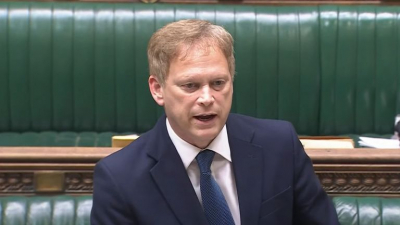Local Voices Matter: Councils to Prioritize Community Support for Low Traffic Neighbourhoods Initiatives
In a significant shift, councils will now be required to gauge community support before implementing Low Traffic Neighbourhoods (LTNs) in their areas. LTNs, aimed at promoting cycling and walking while restricting driving in residential streets, feature segregated cycle lanes, expanded pavements, and vehicular barriers. Proponents argue that these measures alleviate noise and air pollution, encourage healthier and eco-friendly modes of transport, and bolster local businesses with increased foot traffic.
However, critics contend that while LTNs may improve conditions within designated areas, they often displace traffic issues elsewhere. Additionally, many LTNs are not recognized by satellite navigation systems, exacerbating traffic congestion. To address these concerns and bridge the divide, the Department for Transport (DfT) has introduced draft guidance for councils on LTNs, slated to take effect this summer. The guidance stipulates that councils must secure local support for LTNs, with potential repercussions for failure to do so including the withdrawal of future funding and potential government intervention in road management.
The move follows a review highlighting various issues with LTNs, including concerns over delays for emergency services, impacts on disabled residents, and the proliferation of Penalty Charge Notices. Opposition parties, such as Labour, have criticized the government's approach, calling it a diversionary tactic from broader governance challenges.
Transport Secretary Mark Harper emphasized the government's commitment to prioritizing the interests of drivers, stating, "We want local people to have their voices heard, and any traffic schemes to have the consent of those they impact." The review further revealed low levels of community engagement in council consultations on LTNs, underscoring the need for enhanced public involvement in decision-making processes.
Moreover, the report highlighted the issuance of a significant number of Penalty Charge Notices by local authorities implementing LTNs, raising questions about enforcement practices and community compliance.
As councils navigate the evolving landscape of transportation initiatives, the imperative remains clear: prioritizing community input and ensuring that road schemes align with local needs and preferences.
Guidance Reinforced: Councils Urged to Implement 20mph Speed Limits Judiciously
In a bid to promote road safety, councils have received "strengthened guidance" on the implementation of 20mph speed limits, emphasizing their suitability for sensible and appropriate areas, such as school zones. This directive aims to enhance pedestrian and cyclist safety, particularly in areas with high foot traffic and vulnerable road users.
Additionally, local authorities will be encouraged to deploy noise cameras as a means of combating illegally modified exhausts and addressing anti-social driving behaviors. These measures are part of broader efforts to foster a safer and more sustainable transportation environment.
However, Shadow Transport Secretary Louise Haigh criticized the government's approach, citing "ongoing Conservative chaos" and its adverse effects on working people and public services. Haigh underscored the need for accountability and action on pressing issues such as the rising cost of living, inadequate transport infrastructure, and the financing of unfunded spending commitments.
Haigh reiterated Labour's commitment to addressing the concerns of drivers by tackling issues such as skyrocketing car insurance costs and traffic congestion. Moreover, she emphasized the importance of empowering local communities to make decisions regarding their roads, aligning with Labour's vision of decentralized governance.
As discussions around transportation policy continue, the focus remains on striking a balance between road safety, community needs, and effective governance. By prioritizing collaboration and responsiveness, policymakers can strive to create transportation systems that serve the interests of all stakeholders while promoting safety and sustainability.
In conclusion, the reinforced guidance on 20mph speed limits and the deployment of noise cameras represent important steps toward enhancing road safety and addressing anti-social driving behaviors. While these measures aim to promote safer and more sustainable transportation environments, criticisms from opposition voices highlight ongoing challenges in governance and public service provision.
As discussions evolve, it is crucial for policymakers to remain responsive to the concerns of working people and local communities. By prioritizing collaboration, accountability, and effective decision-making, stakeholders can work together to address pressing issues such as rising living costs, inadequate infrastructure, and funding commitments.
Moving forward, a concerted effort to prioritize the real priorities of drivers, including addressing car insurance costs and traffic congestion, will be essential. Moreover, empowering local communities to play a greater role in decision-making regarding their roads can foster greater engagement and accountability.
Ultimately, achieving safer and more efficient transportation systems requires a multifaceted approach that balances regulatory measures with community engagement and responsive governance. Through ongoing dialogue and concerted action, stakeholders can work together to create transportation systems that meet the needs of all citizens while promoting safety, sustainability, and accessibility.







